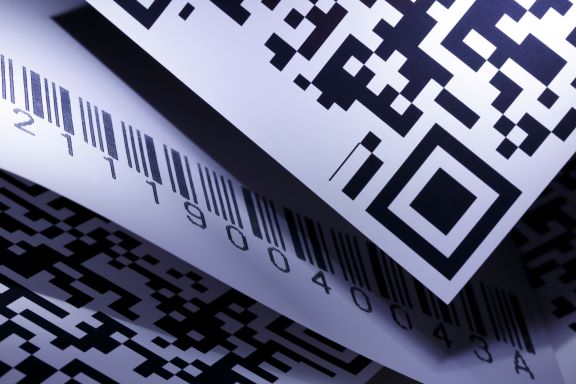The Evolution of Barcode Technology: From Supermarkets to Supply Chains
February 8, 2024
By Bar Code Integrators, Inc.
February 8, 2024

In the intricate dance of commerce, where products move from production lines to store shelves and ultimately into the hands of consumers, one seemingly modest innovation has played an outsized role: the humble barcode. What began as a simple tool for automating supermarket checkout processes has evolved into a cornerstone of supply chain management, revolutionizing the way businesses track and manage their inventory. Let’s delve into the fascinating journey of barcode technology, tracing its evolution from its inception to its pivotal role in today’s global supply chains.
The Birth of the Barcode: The genesis of the barcode can be traced back to the early 1970s when a group of industry pioneers sought a more efficient method for automating the process of grocery checkout. The breakthrough came in the form of the Universal Product Code (UPC), a system of parallel lines of varying thicknesses that represented numerical data when scanned by a laser. On June 26, 1974, in a Marsh Supermarket in Troy, Ohio, a pack of Wrigley’s chewing gum made history as the first product ever scanned using a UPC barcode.
Supermarket Revolution: The adoption of barcode technology quickly spread throughout the retail industry, transforming the way consumers shopped and businesses operated. With the ability to rapidly scan and process items at checkout, supermarkets saw significant improvements in efficiency, reducing both wait times for customers and errors in pricing and inventory management. The barcode became synonymous with modern retail, empowering businesses to streamline operations and enhance the overall shopping experience.
Expanding Horizons: As the benefits of barcode technology became increasingly apparent, its applications expanded beyond the confines of retail. Industries ranging from healthcare to manufacturing embraced barcodes as a means of tracking assets, managing inventory, and improving operational efficiency. The versatility of barcodes, coupled with advancements in scanning technology, paved the way for their integration into a wide array of business processes, driving productivity gains and cost savings across diverse sectors.
Digital Transformation: The advent of the digital age brought about further advancements in barcode technology, catalyzing its evolution into more sophisticated forms. Traditional linear barcodes gave way to two-dimensional (2D) barcodes, capable of storing larger amounts of data in a smaller space. QR codes, in particular, emerged as a popular variant, leveraging their ability to encode text, URLs, and other information beyond simple numerical data. With the proliferation of smartphones equipped with camera technology, QR codes found widespread use in marketing, ticketing, and mobile payments, further embedding barcode technology into everyday life.
Supply Chain Revolution: In recent years, barcode technology has assumed a central role in the realm of supply chain management, driving unprecedented levels of visibility, traceability, and efficiency. With the rise of e-commerce and globalized trade, businesses face mounting pressure to optimize their logistics operations and minimize supply chain disruptions. Barcodes, in conjunction with advanced data analytics and tracking systems, empower companies to monitor the movement of goods in real-time, anticipate demand fluctuations, and respond swiftly to changing market dynamics. From warehouse management to last-mile delivery, barcode technology serves as a linchpin in the intricate web of modern supply chains, enabling seamless coordination and synchronization across vast networks of suppliers, distributors, and retailers.
Looking Ahead: As we stand on the cusp of a new era characterized by digitalization and interconnectedness, the role of barcode technology is poised to expand even further. Emerging technologies such as Internet of Things (IoT) devices, artificial intelligence (AI), and blockchain hold the promise of unlocking new possibilities for barcode integration, enhancing data accuracy, and enabling unprecedented levels of automation, transparency and traceability. From smart packaging solutions to autonomous delivery drones, the future of barcode technology is limited only by our imagination, offering boundless opportunities to redefine the way we track, trace, and manage the flow of goods in an ever-evolving global economy.
In conclusion, the evolution of barcode technology is a testament to the power of innovation to revolutionize industries and reshape the way we conduct business. What began as a simple solution for speeding up supermarket checkout lines has blossomed into a cornerstone of modern commerce, underpinning the efficient functioning of supply chains on a global scale. As we continue to push the boundaries of technological advancement, one thing remains clear: the barcode, in all its iterations, will continue to play a pivotal role in shaping the future of commerce and logistics for generations to come.